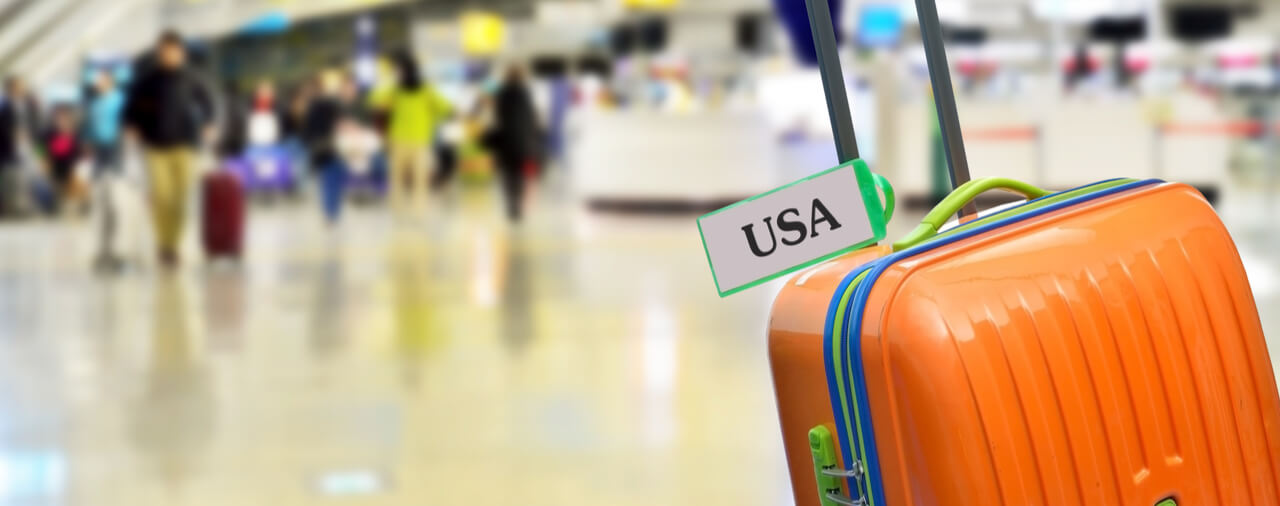Overview
There are two general ways for a non-immigrant traveler to enter the USA — on a valid visitor’s visa or under the auspices of the Visa Waiver Program (VWP). Travelers entering on VWP and traveling by air are required to obtain a pre-boarding authorization, widely known as Electronic System for Travel Authorization (ESTA) [PDF version]. VWP is only available for nationals of Canada as well as countries approved for the program [PDF version].
Most Canadian citizens as well as citizens of the Visa Waiver Program countries may come to the USA without a travel visa. As a precondition for such travel, they are required to carry a machine readable passport, as well as obtain ESTA approval prior to boarding the plane. ESTA approved individuals may still be denied entry if they found to be inadmissible at the port of entry. Custom and Border Protection (CBP) agents enjoy wide discretion in making such determinations. The same is true for all other foreign citizens of the countries not members of the VWP. These individuals will need to secure a non-immigrant visa and appear at the port of entry with such visa in their respective passports.
The agents may still revoke the visa and summarily deport the individual if they find him or her inadmissible at the time of entry. Depending on the type of the inadmissibility found, such deportation could subject the foreigner to either five years of no-come-back period or a life ban from reentering the United States. CBP agents may also allow this individual to withdraw his or her application for admission, in which case no apparent consequences of no-come-back variety would attach.
U.S. department of state’s take
US Department of State suggests the following steps to be taken by individuals seeking travel visa to the United States, while doing so always prior to traveling to the United States.
1. review the visa status, and find out if the traveler needs a U.S. visa or a renewal;
2. review the Visa Wait Times information for interview appointments and visa processing at each embassy and consular section worldwide available on USDOS website. Visit the embassy or consular section website to submit an electronic application for the travel or visitor’s visa; learn how to schedule an interview appointment; pay fees and any other useful instructions;
3. plan on an interview, as well as quick ink less fingerprint scans at the U.S. embassy or consulate, which is required for most visa applicants. Some visa applications require additional administrative processing, which would entail some additional time. Applicants are advised when they apply.
Nonimmigrant Intent
U.S. immigration law (INA Sec. 214 [see article]) demands that the Consular officers at the posts abroad assigned to adjudicate nonimmigrant visa applications by visitors and students to assume that the applicant is seeking such visa as a way to immigrate or relocate to the U.S.A. for permanent residence. Thus, the law places the burden of proving otherwise on the applicant for such visa. The applicant is expected to demonstrate to the satisfaction of the interviewing official that his or her upcoming travel to the U.S. would be for the very purpose stated in the application; confined to the time allowed and end promptly and without incident with the applicant leaving the United States as disclosed. This presumption is known as the “nonimmigrant intent.” The applicant’s words would often not be sufficient to convince the consulate official that he or she does not possess the intent. To do that, one should seriously consider bringing in evidence of ties to the country of residence. Such documentation may include documentation that purports to demonstrate family, property employment and financial ties, specifics travel plans, documentation demonstrating financial ability to support the travel and so on. Again, the purpose is to put the consul’s mind at ease that one is a genuine visitor for the stated purposes and carries no ideation of violating the privilege of being temporary admitted into the United States and that he or she does have every intention of returning to the country of residence on time and without incident.
Assessing your situation
Below, we are providing you with a list of questions, which should be reviewed by any intending non-immigrant. If a considerable number of these will trigger a positive response, such an intending non-immigrant will have to make a special effort to prove their “nonimmigrant intent”, i.e. their intent to return home after completing their activities in the USA.
Are F-1 or J-1 visa applications routinely denied by the U.S. Embassy or Consulate in your country?
Do(es) your parent(s), sibling(s) or spouse live in the U.S., in any status?
Are you married? Are you then applying for F-2 or J-2 visas for your spouse and children?
Does any member of your immediate family hold a U.S. Citizenship or a permanent resident status?
Is your financial sponsor or guarantor for your intended activities in the USA a friend or relative who lives in the USA?
Will this be your first trip to the USA.?
Have you recently concluded one activity in the US A and now want to begin a new one?
Have you ever been denied a U.S. visa?
If you have answered “yes” to even a few of the questions above, you may want to attempt to prove that you intend to return to your home country. Below, we offer some ideas about the supporting documents you may want to take with you when applying for a visa.
Financial ties
Ability to show that you own real estate or other substantial property, or have financial investments in your country may help prove strong financial ties to your country. It is important to note, that you may not use any assets that will be required to pay for your F-1 or J-1 activities. You will need to show the availability of that financial support separately to be able to comply with the minimum visa requirements.
Types of documents to submit
official documents showing property ownership;
official copies of investment statements or certificates;
an original letter or financial statement from your banking institution or from your accountant.
Employment ties
Guaranteed full-time employment upon your return would indicate strong employment ties to your country. You should take care to underscore the prestige and importance of your job. It is also important to show that the anticipated salary will be high enough to warrant your return to your country.
Types of documents to submit
an official letter from your employer, that guarantees your employment upon your return. It is very important to make sure that the letter references the value of your U.S. activities to your continued employment and to your ability to complete the type of work your employment requires;
you may also submit an official letter from your current employer, confirming that you would be expected to resume your work with them after your return from the U.S.;
if you are not currently employed, but are expecting to be hired after the completion of your U.S. activities, you may instead submit a letter from a prospective employer. Such letter should state that a position will be offered to you upon your return. If possible, you should point out the relevance of your U.S. activities to your prospective employment.
Family ties
If possible, you should underscore your strong family ties to your country by showing that your immediate family lives in there. The U.S. Consular officers pay attention to the composition of your immediate family and to your family ties to your country. If you are the primary caretaker for your parents as the oldest or only child in your family, the Consular officer may take that into account, and believe that you are more likely than not to return home. Should one or both of your parents be in poor health, this may be treated as another reason you might be likely to return to your country.
Types of documents to submit
copies of official documents proving family relationships, such as birth certificates, divorce certificates and/or death certificates;
residency registration documents;
official letters from treating physicians explaining all major medical conditions your parents may have.
Your foreign travel history
If you have been issued visas to visit other countries, and if you had returned to your country after such visits, you will want to point this out to the U.S. Consular officer. Such travel history will demonstrate a pattern of your behavior, indicating that you will return to your country after completing your U.S. activities. A pattern of behavior is best established by a vast number of trips you may have had.
Types of documents to submit
your valid current passport containing valid visas and border crossing entry and exit stamps;
you may consider providing any and all old passports, if they also contain such stamps and visas.





